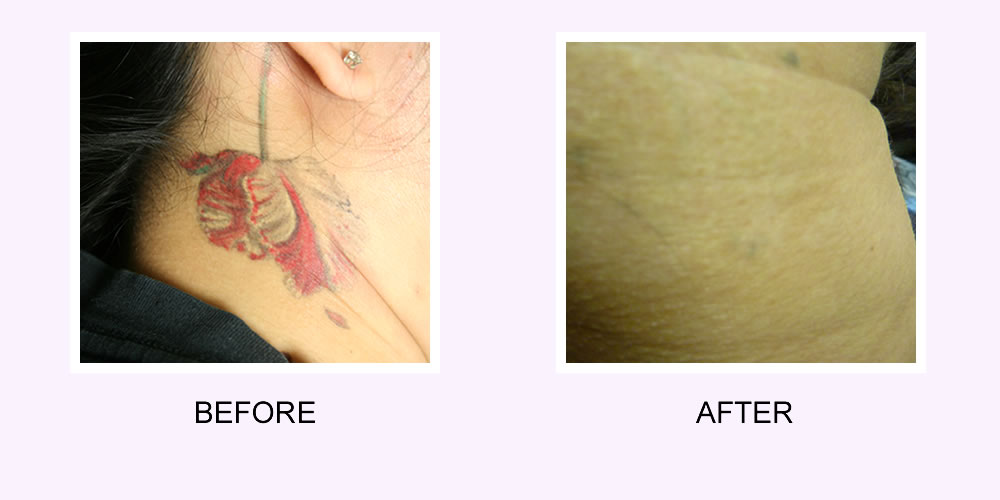It sounds like a “how much wood can a woodchuck chuck” joke, but really, how much of a tattoo can really be removed? There are a lot of factors that can affect how well tattoo removal works. Keep in mind that laser tattoo removal is a multi-visit process. It can take more than one session to see real results for your laser tattoo removal. Let’s explore some of the concepts of what makes a tattoo better or worse to remove.
Length of time having the tattoo
Tattoos that are older stand a better chance at being removed. This is because over time a tattoo quality can degrade as your body continually removes and replaces skin cells. This is why over time tattoos can look fuzzy or blurry. The older the tattoo is, the better a chance of it being completely removed by laser tattoo removal.
Who tattooed you
Unfortunately, professional tattoos are harder to remove than amateur (or “scratcher”) tattoos. This is because professional tattoo artists know that in order for a tattoo to stay more crisp and permanent, pigment must be delivered deeper into the skin. Amateur or “scratcher” artists may not know how deeply to tattoo. A shallower tattoo can be removed easier than a deeper one.
Ink color
Some tattoo colors respond better than others to laser tattoo removal. Green, blue, and black pigments are considered easiest to remove, while red, orange, yellow, and white are most difficult.
The color of your skin
Unfortunately lighter skin responds better to the laser treatment, because lighter skin does not absorb the laser treatment as much as darker skin may. That is not to say that darker skin cannot benefit from laser tattoo removal.
The location on the body
Because skin thickness can vary from your eyelids (very thin) to thicker elsewhere, the amount of ink applied to those areas can vary as well. Laser tattoo removal works better on the torso and neck, but that does not mean that ankles, wrists, hands, feet, and other areas can’t benefit from laser tattoo removal as well.
Your body’s ability to remove the ink can affect how long it takes for the completed process to take effect.
This is important to know. Laser tattoo removal breaks down pigment so the body can absorb it, this is why treatments are spaced apart 3 to 4 months to allow to body to break the pigment down and heal properly. The completed laser tattoo removal process can take upwards of a year while your body processes the broken down pigment. Final results can be different than those a couple of weeks later after your final laser removal session. There is no way to know how many sessions a person may need, unfortunately, but the average person can expect 5 to 12 treatments to have the best results.
Laser tattoo removal is great for tattoo revision
Say you want to remove a name and replace it with something else, or you would like a cover up. Since this does not require full removal, this is an ideal use for laser tattoo removal.
Ready to have that tattoo removed? Contact us today to schedule an appointment!

I have been very thankful to you for providing this solution. Keep updating thankyou
Thanks in favor of sharing such a good solution.
that’s why I have read it entirely.
That is interesting that laser tattoo removal works better on the torso. That is something that I would want to have if for the tattoo that I have on my torso. This is something that I am going to have to look into getting soon since my wife doesn’t like my tattoo that much.
I was surprised to read that tattoo removal works better on the torso and neck. This is great to know because I have a tattoo on my neck that I want to be removed. I got a butterfly tattoo there when I was a teenager, but have regretted it since. I’ll look into places that can help me remove this mistake.